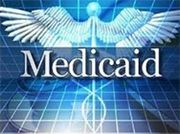
THURSDAY, Jan. 22, 2015 (HealthDay News) — Sweetening Medicaid payments to primary-care providers does make appointments for first-time patients more widely available, a new study suggests.
The finding offers what the researchers say is the first evidence that one of the aims of Obamacare is working — that increasing Medicaid reimbursements for primary care to more generous Medicare levels increases patient access to health care. Medicaid is the government’s health insurance program for the poor.
The results were published online Jan. 21 in the New England Journal of Medicine.
Medicaid notoriously pays providers less than what Medicare and private insurers pay for the same services. Policymakers were worried that the supply of primary-care doctors willing to see Medicaid enrollees after the expansion of health coverage under the Affordable Care Act would not meet patient demand.
To address their concern, the law directed states to raise Medicaid payments for primary-care services in 2013 and 2014. The increases varied by state, since some were already paying rates closer to Medicare rates and others were paying less than half of Medicare rates, the study authors noted.
States received an estimated $12 billion in additional federal funding over the two-year period to ratchet up Medicaid payments to eligible primary-care providers, according to the American Academy of Family Physicians.
However, the additional federal funding expired at the end of 2014 and, so far, only 15 states plan to continue the reimbursement increases, the study noted.
To assess the effectiveness of the Medicaid payment provision under Obamacare, researchers from the University of Pennsylvania in Philadelphia and the Urban Institute in Washington, D.C., received funding from the Robert Wood Johnson Foundation.
Trained callers posing as patients contacted primary-care offices in 10 states during two time periods: before and after the reimbursement increases kicked in. Callers indicated having coverage either through Medicaid or private insurance and requested new-patient appointments.
After the pay hike, Medicaid appointment availability rose significantly, the study found. In the states with the largest increases in Medicaid reimbursement, gains in appointment availability were particularly large, the researchers noted.
Across the 10 states examined in the study, Medicaid reimbursement for primary care rose by more than 50 percent, on average, boosting appointment availability by nearly 8 percentage points.
“In the states that are what I would call the high-bump states, rates went up by, on average, 13 percentage points, and in the low-bump rates, it only went up about 4 [percentage points],” said study author Daniel Polsky, executive director of the Leonard Davis Institute of Health Economics at the University of Pennsylvania.
There was no such bump in appointment availability for the privately insured patient group, suggesting the increase in reimbursement was responsible for freeing up appointments — not other factors, explained Polsky, who is also a professor of medicine and health care management.
“We feel pretty comfortable attributing what we found to the pay bump,” he added.
However, the authors said further study would be needed to determine whether the costs and benefits of the payment policy warrant ongoing state and federal investment.
Now that the pay hike has expired, researchers can only speculate about the impact on patient access.
“I think our hypothesis for our next study would be that we might see a reversal of some of the increases [in appointment availability],” Polsky said.
Researchers thought the reimbursement increase would have a lesser effect on appointment availability in states that expanded Medicaid since there would be more patient demand, but that was not the case. Both New Jersey, which expanded Medicaid, and Pennsylvania, which did not, had similar increases in seeing new patients, according to the study.
The patient advocacy group Families USA released a document this week outlining proposed next steps for health reform, including a permanent adjustment to Medicaid rates to create parity with Medicare rates.
Primary-care physician groups are also pushing for restoration of the pay parity provision.
“This is really among our top priority issues,” said Shari Erickson, vice president for governmental affairs and medical practice at the American College of Physicians in Washington, D.C., which represents internal medicine physicians.
“I think that it’s unfortunate, obviously, to let a program lapse that is showing promising data — both anecdotally and in this initial study here — before we can really assess its true effectiveness,” Erickson added.
More information
Visit the U.S. Centers for Medicare & Medicaid Services for more on Medicaid.
Copyright © 2025 HealthDay. All rights reserved.

